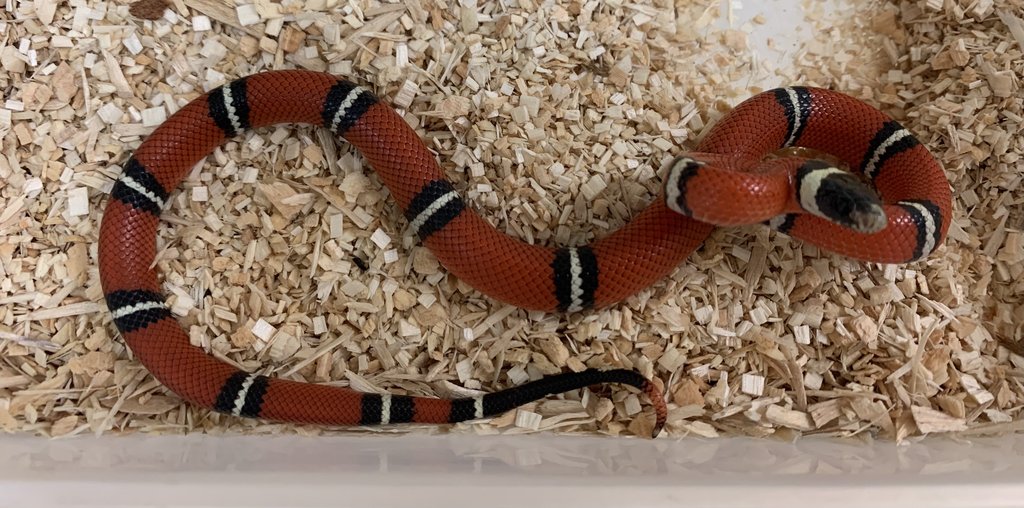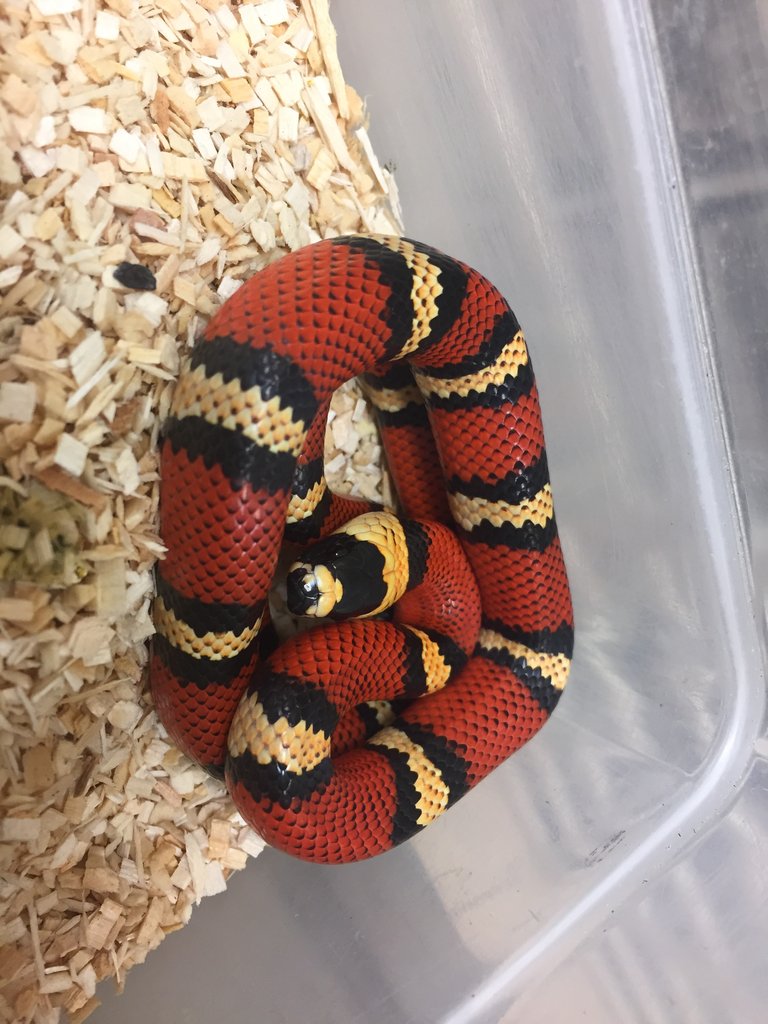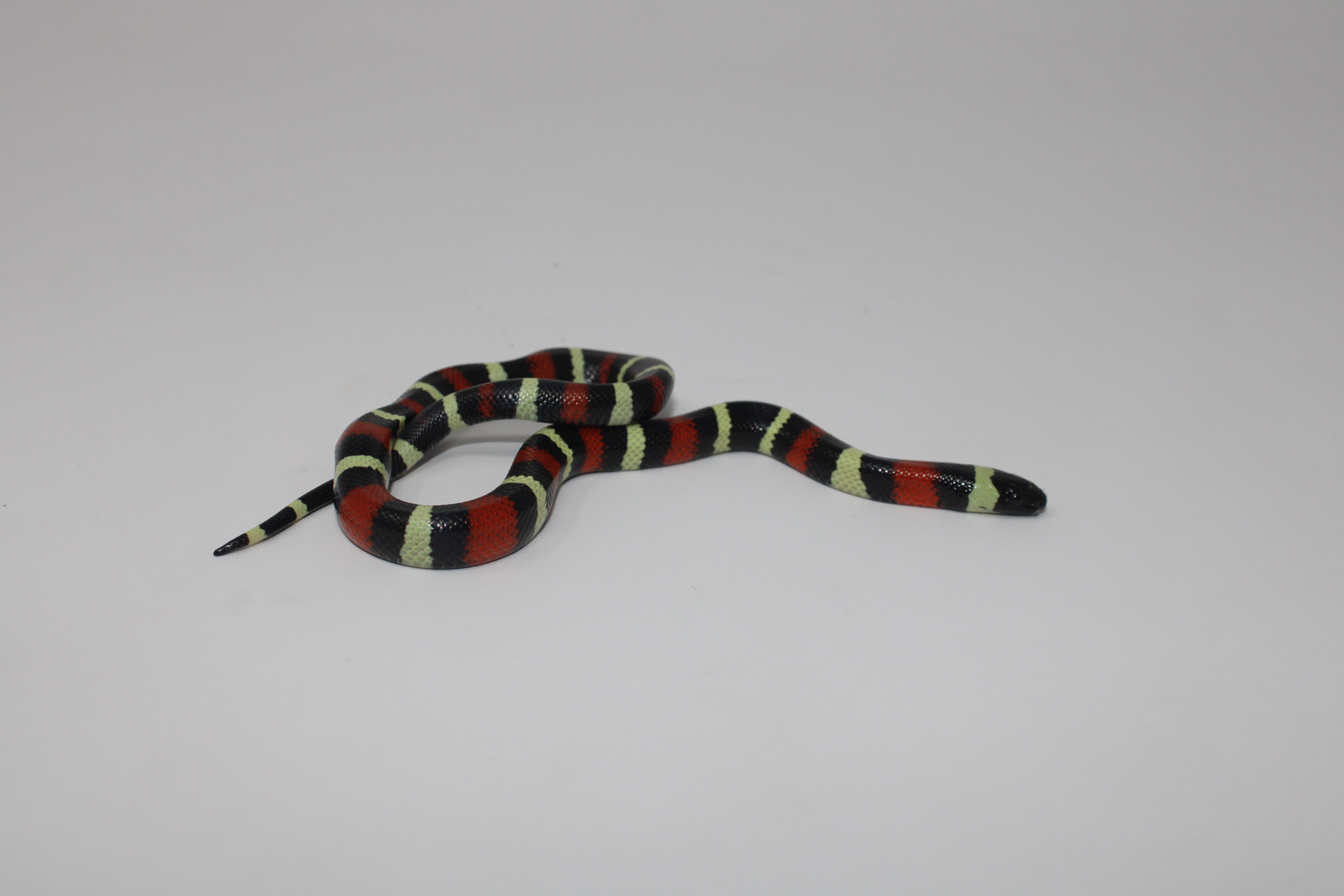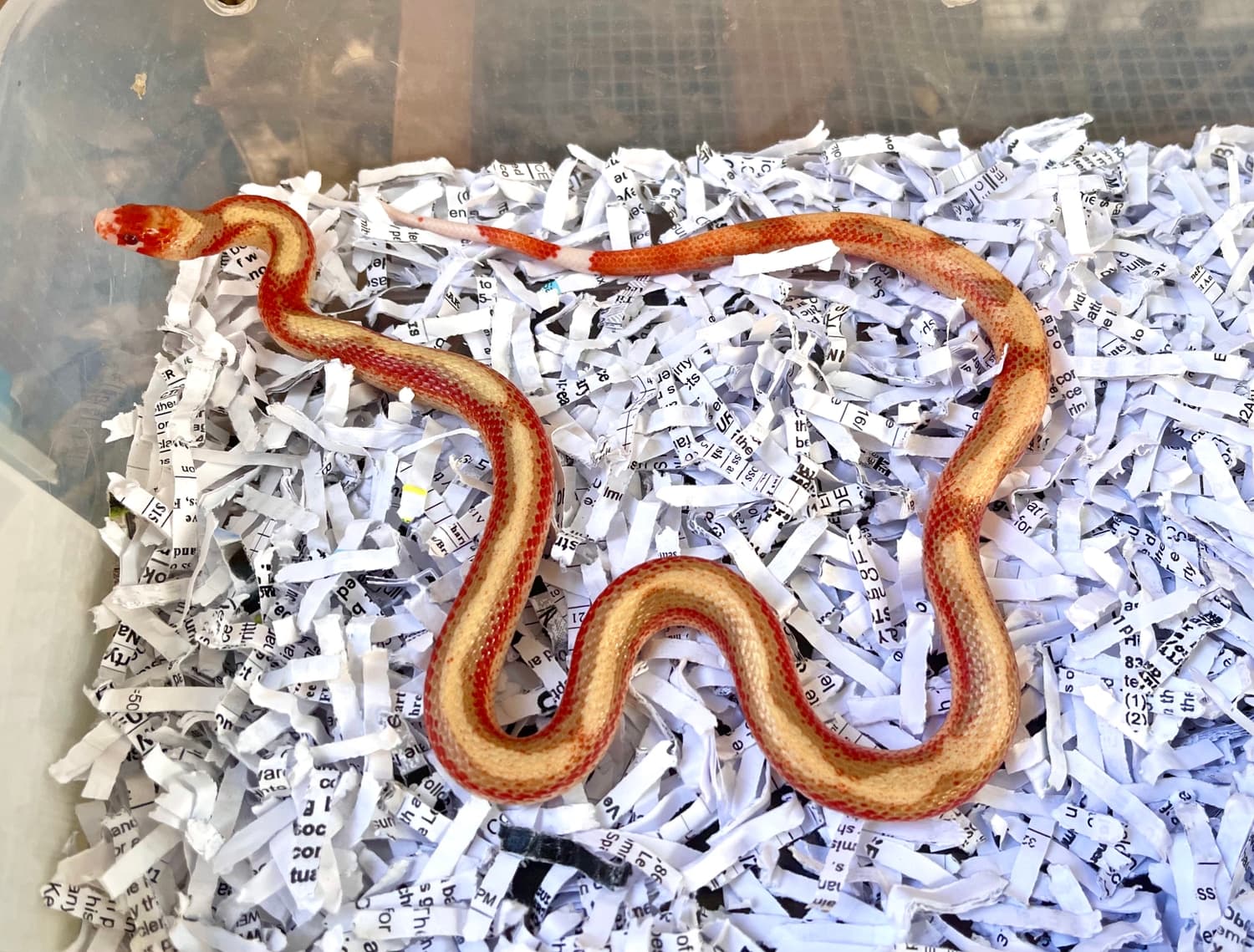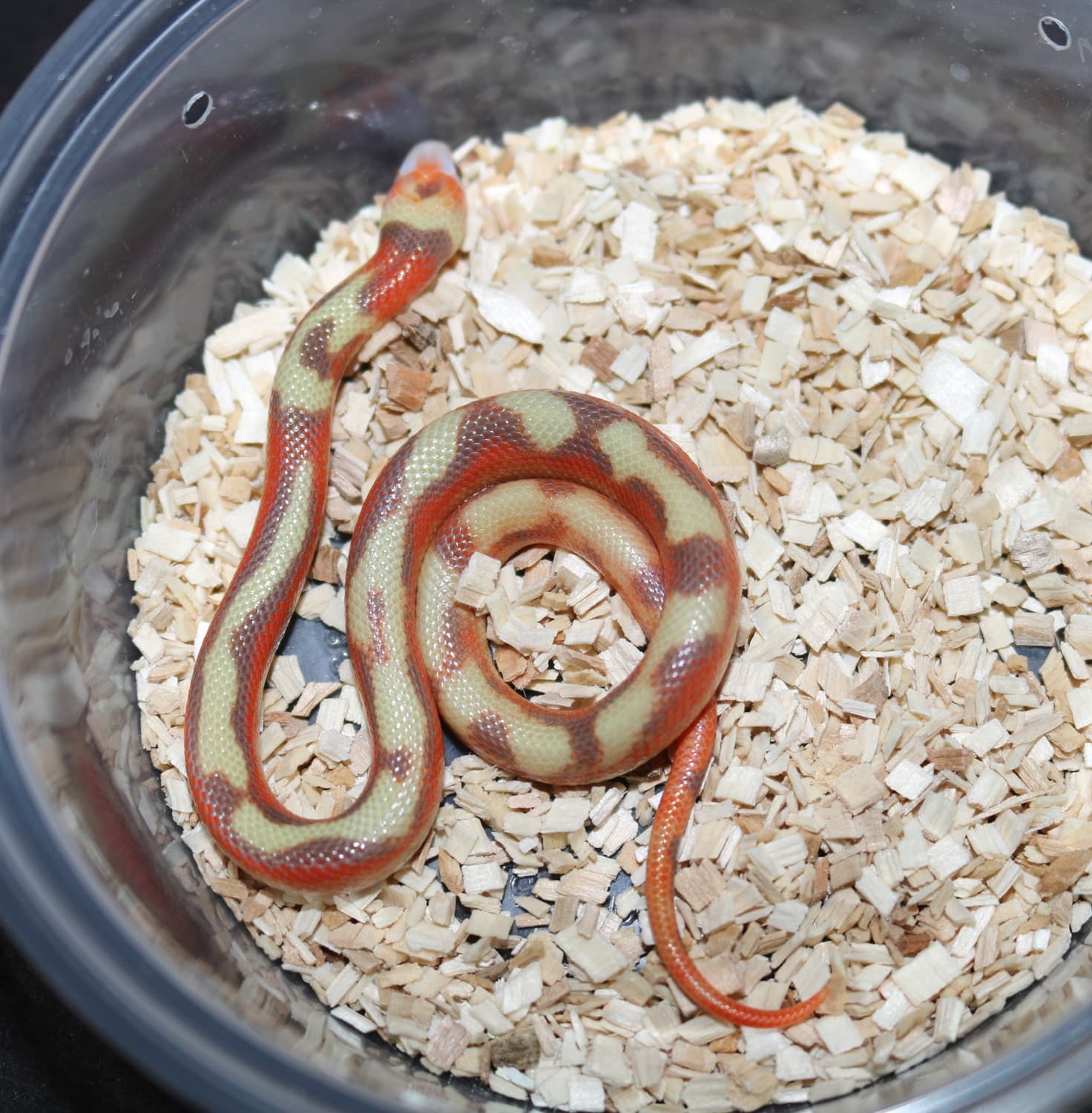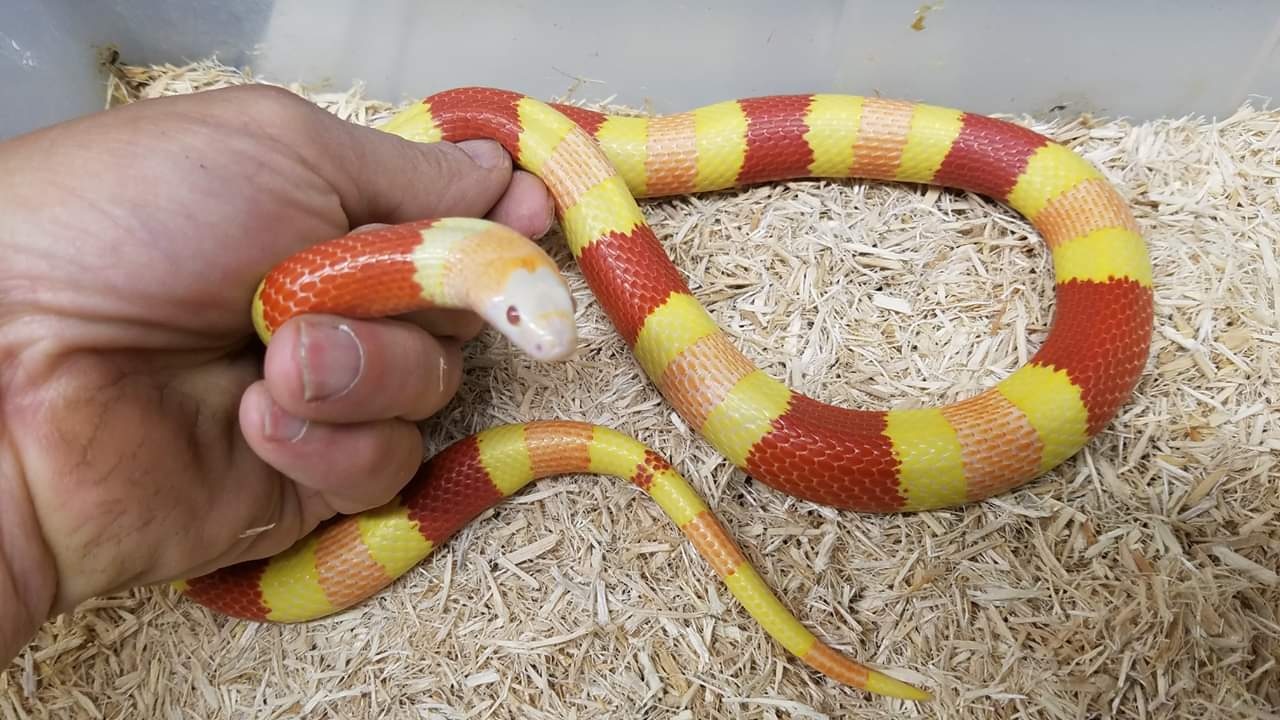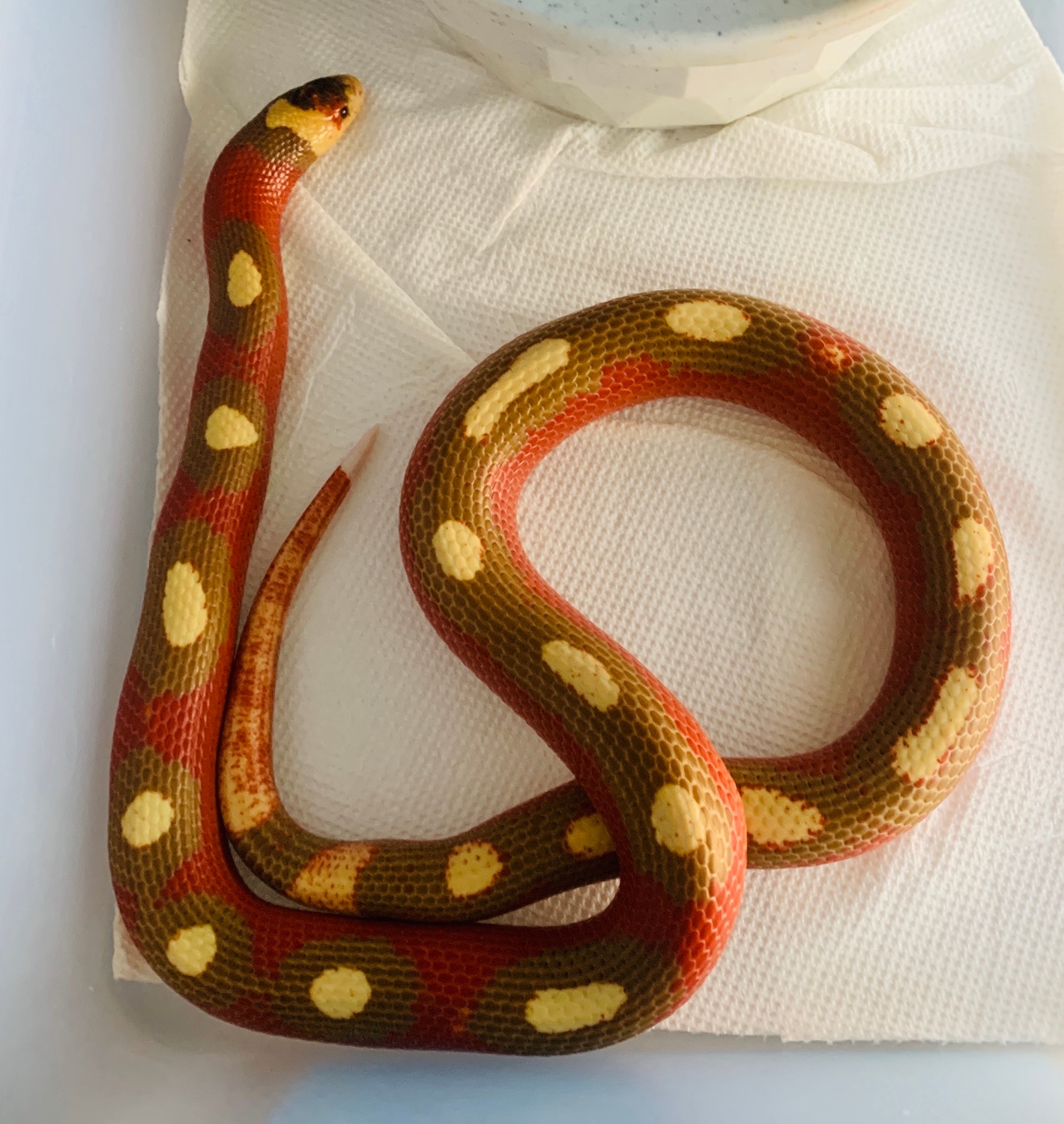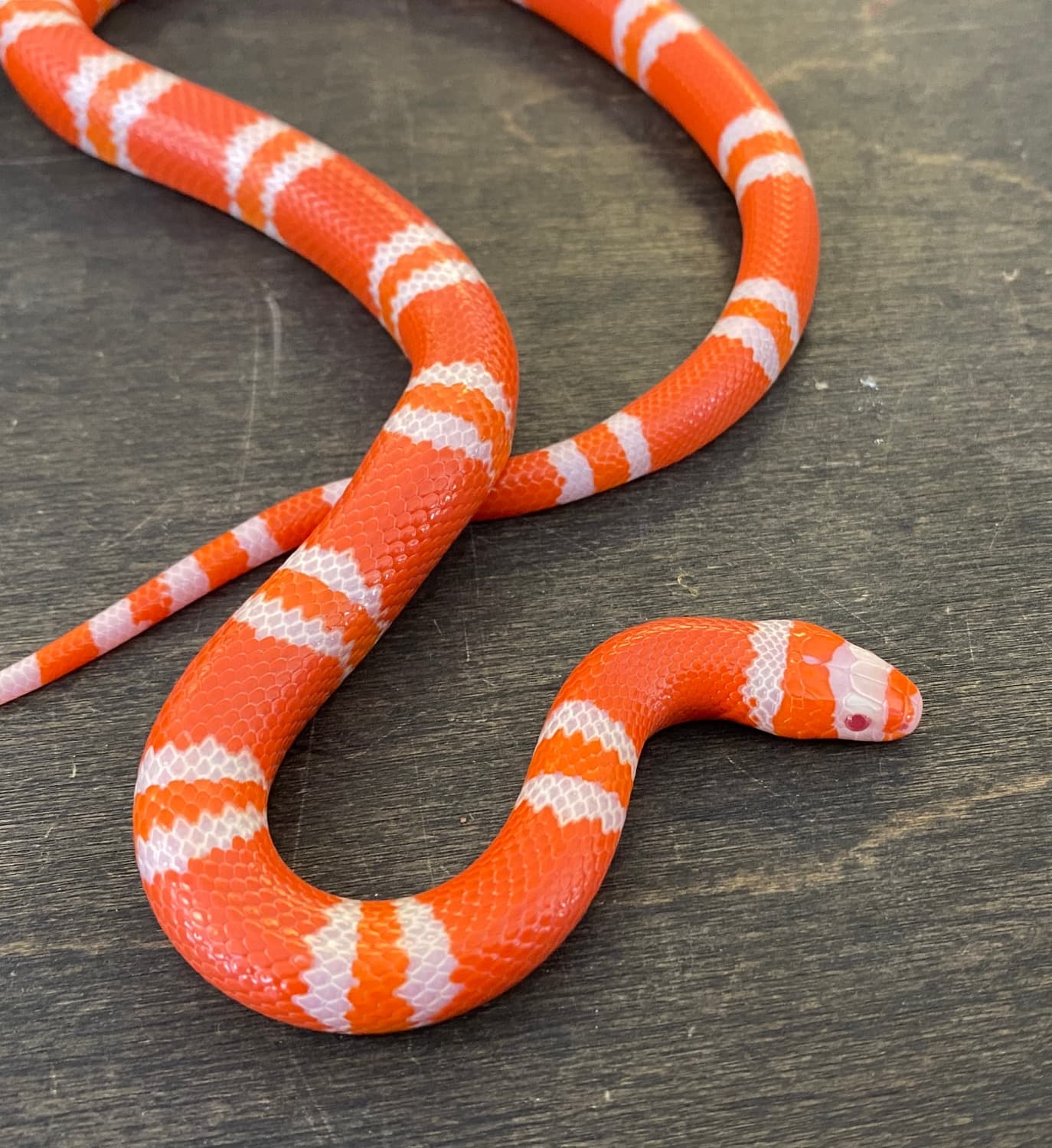Normal
Type: Other
Aliases: Classic, Wild, Lampropeltis triangulum
Issues: N/A
First Produced In: Unknown
Availability: Rarest
Last Updated: 2022-04-15
Do you have any suggestions or corrections for this article?
Click here to contribute feedback
About
Milk Snakes commonly exceed 60 cm (24 in) in total length (including tail), with very large specimens known to reach total lengths of 120 to 132 cm (47 to 52 in). They appear to be one of the smaller species of the kingsnake genus, as adults in the wild apparently average from 38 to 225 g (1.3 to 7.9 oz) in North America and most typically do not exceed a total length of 90 cm (35 in). However, unusually large milk snakes can become rather bulkier than average-sized adults and potentially weigh up to 750 to 1,400 g (1.65 to 3.09 lb), though high weights as such are generally reported from captivity.
History
Milk snakes have a wider geographic range than most snakes and have the biggest range of any snake in North America. According to Western Connecticut State University, they can be found as far north as Ontario and Quebec and as far south as Venezuela. They live throughout Mexico and Central America. In the United States, they can be found almost everywhere but the West Coast.
Given their broad range, milk snakes must be able to thrive in a variety of habitats. They most commonly like forested places but are also happy in fields, rocky outcroppings, agricultural areas and barns, according to the Savannah River Ecology Laboratory. They like to spend much of the day under rocks, boards or hidden in dark places of barns. Contrary to their namesake folktale, milk snakes do not frequent barns to “milk” the cows; instead, they seek out the rodents living there.
Appearance
Head
Many milk snakes have a light-colored Y or V shape on their necks.
Body
The appearance and coloration of milk snakes varies somewhat among the 24 subspecies, but all have banded coloration. These bands can vary in color from white to red to black, and alternating bands of differing colors are common. The lighter area separating the colorful bands can be white, yellow or orange. The darker bands are outlined in black.
They have smooth and shiny scales and their typical color pattern is alternating bands of red-black-yellow or white-black-red.
Red blotches instead of bands are seen in some populations.
Controversy
Related Traits
24 subspecies are currently recognized.
- Guatemalan Milk Snake
- Louisiana Milk Snake
- Andean Milk Snake
- Mexican Milk Snake
- Jalisco Milk Snake
- Blanchard’s Milk Snake
- Pueblan Milk Snake
- New Mexico Milk Snake
- Conant’s Milk Snake
- Dixon’s Milk Snake
- Black Milk Snake
- Central Plains Milk Snake
- Honduran Milk Snake
- Pale Milk Snake
- Nelson’s Milk Snake
- Pacific Central American Milk Snake
- Atlantic Central American Milk Snake
- Sinaloan Milk Snake
- Smith’s Milk Snake
- Stuart’s Milk Snake
- Red Milk Snake
- Utah Milk Snake
- Eastern Milk Snake
